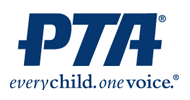Chapter 2: Dealing in Reality: Protocols of Persuasion

PR! A Social History of Spin by Stuart Ewen
Chapter 2 of Stuart Ewen’s PR! A Social History of Spin begins with Ewen discussing his frustrations with writing his book. He says that his topic for the book, the role of public relations in twentieth century American life, was not as easy and natural and he thought it was going to be. Ewen realized that every aspect of American society is touched by public relations professionals and to condense the history into a simple book was going to be a daunting task.

Stuart Ewen
Ewen goes on to describe a class he taught in the spring of 1993 at Hunter College, City University of New York, called The CULT(ure) of Publicity. Ewen’s intention was to teach the class about the rise of public relations practices in the United States.

After he had started teaching the class, Ewen was approached with a public relations opportunity. Lynn Palazzi, a reporter for New York Newsday, a New York City tabloid (http://www.newsday.com/ ), was interested in writing a story about Ewen’s class for an article about interesting classes being taught in New York City.
Palazzi wanted to interview Ewen and also attend his class. Ewen said that he would be happy to oblige but in order to come into his classroom, she had to follow two conditions: 1. She cannot bring a photographer and 2. She should try to blend in with the students, as to not be a disruption to the class since they will not know that a reporter is coming. Palazzi agreed and they set up a day that she would come interview him and attend his class.
In the class session before Palazzi’s visit, Ewen informed his class that a reporter would be visiting. He told the class about the article that she was writing and also told them that she would think that none of the students would know that she was there.
Ewen then thought that “…this provided us with a perfect occasion to test out some of the techniques outlined by Bernays…What could we do to turn our class into “news”?” (Ewen 22-23). Excited, the students began to think up some possible ideas that would secretly influence the way she would write about the class. They came up with a plan.
First, the class would begin with students bringing in news clippings from local newspapers, with articles from Palazzi’s New York Newsday being the most prominent. Students would then discuss how these articles were shaped by public relations professionals. Second, the students would consistently raise their hand, to show lots of enthusiasm. Lastly, to add some mystery, everyone would show up to class dressed in black.
The day of Palazzi’s visit finally arrived. Before class, she sat down with Ewen and conducted an interview. She explained her reasoning for choosing his class, which was the way in which he spelled the title: The CULT(ure) of Publicity. He explained that he wanted to visualize the course content into the title and also his emphasis on the idea of publicity being mesmerizing, like a cult. After the interview, it was time for class to begin.
When Ewen entered into his classroom he saw everyone dressed in black. Everyone except Palazzi. Ewen himself even felt the effects of all of the black, calling it “chilling” (25). The plan went off without a hitch. However, at the end of the class, he saw Palazzi bolt out of the room, and it worried him that maybe she had been freaked out.

Imagine if everyone in these seats were dressed in black...would that be a "chilling" experience for you?
Later in that semester, Ewen received a call saying that Palazzi’s article was in the paper. Ewen found the article; it was called “College Lite” (26). The article called Ewen’s students “urban hipsters” that wear “varying shades of black—to cast a more critical eye upon the images and messages they’re bombarded with every day.” She compared the class to a lecture, but said that it was more like a “coffee house exchange of ideas” (26). After Ewen’s class read the article, they discussed its content and “Gratified and amused, we [Ewen and his class] congratulated ourselves on having mastered the Way of Spin”
Ewen also talked about negative consequences that may result from using public relations techniques. Ewen tells his readers about a story that was used to increase American support of the U.S. entry into the Persian Gulf War in 1991. The story was about a fifteen year old Kuwaiti girl who allegedly witnessed Iraqi soldiers leaving babies to die in a hospital. In reality, the girl was the daughter of the Kuwaiti ambassador to the U.S. and she never witnessed such events (28-29). This lie had been concocted by Gary Hymel, Vice President of Hill and Knowlton, one of the largest public relations firms in the world (They still exist today: http://www.hillandknowlton.com/ ). He had been hired by the Kuwaiti royal family to get U.S. support for the war.

Public relations, Ewen says, is good at manufacturing emotion. He uses examples such as the “applause sign,” the publicity of statistical polls, and orchestrated “grassroots” expression (often called Astro Turf Organizing). He also talks about the use of unspoken visual techniques, like how his class dressed in all black, to create a mood. He says that this is used a lot in society, for example, the president making a speech before a dramatic background (29).
Ewen also talks about Life is in the Balance, an education brochure from the Dow Chemical Corporation. The brochure argues about environmental regulation of the petrochemical industry. The brochure also discusses having the right to make your own decisions. The brochure talks nothing about the environmental hazards that their industry is involved with. Visually, the pamphlet is very “green,” it has a green cover and is printed in earth tones. Ewen then emphasizes the importance of the brochure’s façade by saying “It’s not what you say, but how you say it, that matters” (31).
The emphasis that public relations puts on influencing opinion can hurt actual content, Ewen says. For example, his class was so intent on influencing the reporter’s opinion that they did not discuss at length about the content of the actual class. Ewen says that in our society, “prizing message before substance” is typical (32).
In a review of the case studies discussed in the chapter, Ewen closes by saying that “Embedded within such schemes lies a nervous preoccupation with the perils of democracy that has chaperoned the growth of corporate public relations for nearly a century” (33). I think that Ewen means that the struggles we face as a democracy are played off of by public relations. For example, in Nayirah’s case, the public relations played off our democratic want for everyone to be free of harm. The public relations firm that did this story recognized this sentiment among the public and was able to build a campaign out of it. These struggles, or simply just feelings, that we see/feel in our democracy help to build a successful foundation for public relations campaigns.
Ewen also discusses how Bernays said that in our democracy, “public relations has become essential for the maintenance of order” and that “the future of civilization lay in the capacity of elites to guide public opinion efficiently” (34). This belief is reflective of the fact that public relations is guided by the struggles of a democracy. If a politician can play off of our struggles and create a public relations campaign that addresses these struggles, he can be successful. If he can guide the public in the right direction and bring order in a world of chaos, our civilization will have a positive future. Bernays once said “Intelligent men must realize that propaganda is the modern instrument by which they can fight for productive ends and help to bring order out of chaos” (35).
 Lisa did a great job on her blog this semester. She completed all of the assignments and did so in a well-organized manner. Lisa’s examples of companies that have successful dialogic loops were great and made it seem like she really understood what a dialogic loop was. I also like the layout of Lisa’s blog, it is nice and colorful. She did a great job of posting a lot of pictures, which made her blog even more fun to read. Good job Lisa, you should be proud of all of your hard work!
Lisa did a great job on her blog this semester. She completed all of the assignments and did so in a well-organized manner. Lisa’s examples of companies that have successful dialogic loops were great and made it seem like she really understood what a dialogic loop was. I also like the layout of Lisa’s blog, it is nice and colorful. She did a great job of posting a lot of pictures, which made her blog even more fun to read. Good job Lisa, you should be proud of all of your hard work!

























































